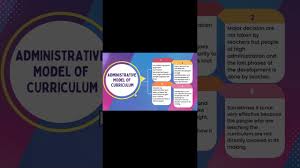Centralized Decision Making: Definition and Examples
Centralized decision making is a process in which key decisions are made by a single individual or a small group of individuals within an organization. This approach to decision making is common in hierarchical structures where authority and power are concentrated at the top levels of the organization.
One of the main advantages of centralized decision making is that it can lead to quick and efficient decision-making processes. With a limited number of decision-makers, information can be gathered, analyzed, and acted upon swiftly without the need for extensive consultations or approvals.
However, centralized decision making also has its drawbacks. One potential downside is that it can lead to a lack of input from those lower down in the organization who may have valuable insights or perspectives to contribute. This can result in decisions that are not fully informed or may not take into account all relevant factors.
Examples of centralized decision making can be found in various organizations, such as military institutions, government agencies, and large corporations. In these settings, top-level executives or leaders often have the authority to make important decisions that impact the entire organization.
In conclusion, centralized decision making has both advantages and disadvantages. While it can lead to efficient decision-making processes, it may also limit input from other stakeholders within the organization. Understanding the implications of centralized decision making is crucial for organizations seeking to optimize their decision-making processes.
Six Key Strategies for Effective Centralized Decision Making in Organizations
- Clearly define decision-making roles and responsibilities.
- Establish clear communication channels for sharing information.
- Consider input from relevant stakeholders before making decisions.
- Ensure transparency in the decision-making process.
- Document decisions and rationale to track progress and learn from outcomes.
- Regularly review and evaluate the effectiveness of centralized decision-making processes.
Clearly define decision-making roles and responsibilities.
In centralized decision making, it is crucial to clearly define decision-making roles and responsibilities to ensure effective and efficient outcomes. By assigning specific roles and responsibilities to individuals or groups within the organization, clarity is established on who has the authority to make decisions and who is accountable for the outcomes. This helps streamline the decision-making process, minimizes confusion or conflicts, and ensures that decisions are made in a timely manner with accountability in place. Clear definition of decision-making roles and responsibilities fosters transparency and accountability within the organization, ultimately leading to better overall decision-making practices.
Establish clear communication channels for sharing information.
Establishing clear communication channels for sharing information is crucial in centralized decision making. By ensuring that information flows efficiently and effectively between decision-makers and other stakeholders, organizations can enhance transparency, collaboration, and alignment. Clear communication channels help prevent misunderstandings, facilitate timely decision-making, and enable all relevant parties to stay informed and engaged in the decision-making process. This practice fosters a culture of openness and trust within the organization, ultimately leading to more informed and successful decisions.
Consider input from relevant stakeholders before making decisions.
When implementing a centralized decision-making approach, it is essential to consider input from relevant stakeholders before finalizing decisions. By gathering insights and perspectives from individuals who may be directly affected by the decision, leaders can ensure that all viewpoints are taken into account and that the decision reflects a comprehensive understanding of the situation. This inclusive approach not only promotes transparency and collaboration but also increases the likelihood of making well-informed and effective decisions that benefit the organization as a whole.
Ensure transparency in the decision-making process.
Ensuring transparency in the decision-making process is crucial when implementing centralized decision making within an organization. By maintaining open communication and providing clarity on how decisions are made, leaders can build trust and credibility among stakeholders. Transparency helps to foster a sense of inclusivity and fairness, as individuals understand the rationale behind decisions and feel empowered to contribute their perspectives. Clear communication of the decision-making process also promotes accountability and encourages a culture of openness within the organization. Ultimately, transparency in centralized decision making enhances organizational effectiveness and promotes a positive work environment built on trust and collaboration.
Document decisions and rationale to track progress and learn from outcomes.
Documenting decisions and the rationale behind them is a crucial tip in centralized decision making. By keeping a record of the decisions made and the reasons for choosing a particular course of action, organizations can track their progress and learn from the outcomes. This documentation serves as a valuable reference point for evaluating the effectiveness of decisions over time and identifying areas for improvement. Additionally, it helps ensure transparency and accountability in the decision-making process, fostering trust among stakeholders and promoting a culture of continuous learning and growth within the organization.
Regularly review and evaluate the effectiveness of centralized decision-making processes.
Regularly reviewing and evaluating the effectiveness of centralized decision-making processes is crucial for ensuring that decisions are being made efficiently and in the best interest of the organization. By conducting regular assessments, organizations can identify any areas for improvement, address potential bottlenecks, and adapt their decision-making strategies as needed. This proactive approach helps to maintain the relevance and effectiveness of centralized decision making, ultimately leading to better outcomes and increased organizational success.



